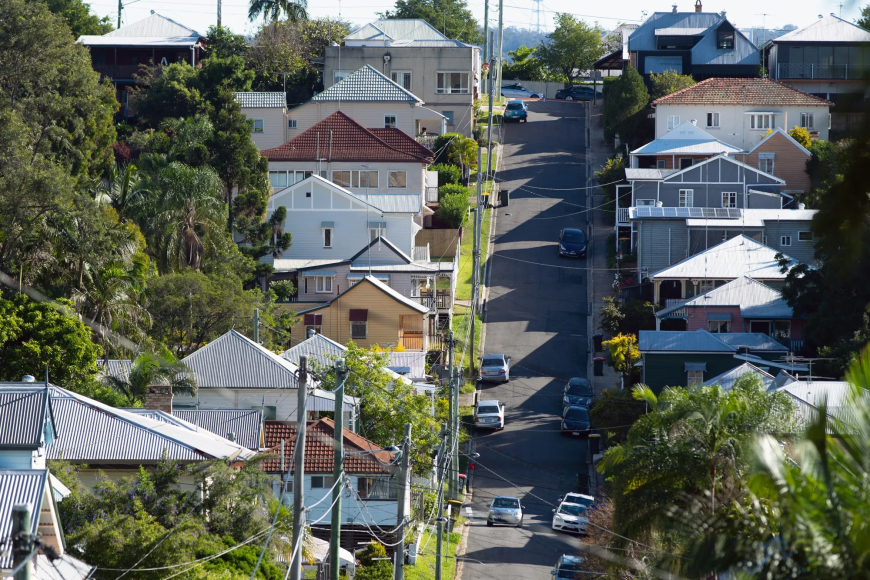Australia’s Housing Squeeze: Migration, Rising Costs, and the Battle for Affordability
Australian officials link migration to soaring housing prices, fueling a national debate over affordability, demographic change, and urban planning challenges.

A Nation at a Crossroads
Australia’s housing market is once again at the center of public and political debate, as new government figures indicate that the country’s record-high migration intake is contributing to unprecedented pressure on housing availability and affordability. Officials, housing experts, and economists warn that the combination of high population growth and slow housing construction is creating a “perfect storm” for buyers and renters alike.
The issue has sparked heated discussions in Parliament, urban planning circles, and the media, with the housing squeeze emerging as one of the most pressing challenges facing the nation in 2025.
The Numbers Behind the Squeeze
According to the latest Australian Bureau of Statistics (ABS) data, the nation welcomed over 500,000 new migrants in 2024—one of the highest annual figures in modern history. The majority arrived in major cities like Sydney, Melbourne, and Brisbane, where housing markets were already under intense strain.
At the same time, construction output remains well below demand. Industry reports show that housing starts fell by 12% in 2024, partly due to labor shortages, high construction material costs, and rising interest rates.
The mismatch between supply and demand is fueling competition for properties, sending both purchase prices and rental rates surging. In Sydney, the median house price has surpassed $1.6 million, while Melbourne’s average rent for a two-bedroom apartment has risen by nearly 20% in the past year.
Migration’s Role in the Debate
Australian officials have acknowledged that migration plays a role in the current housing affordability crisis. While they emphasize the economic benefits of a growing, skilled workforce, they also admit that the timing and scale of migration have intensified market pressures.
Housing Minister Julie Collins recently told reporters that migration alone is not the root cause, but when combined with slow housing development and urban growth bottlenecks, it creates a sharp imbalance.
“The solution isn’t to halt migration, but to better synchronize housing supply with population growth,” Collins said.
Economic and Social Implications
For many Australians, the housing crisis is not just about economics—it’s about access to a basic necessity. First-home buyers, especially younger Australians, are being priced out of the market, while low- and middle-income families face growing rental stress.
The Grattan Institute has warned that without urgent action, housing affordability could deteriorate further, leading to broader economic instability and deepening social inequality. Businesses, too, are feeling the impact, with some industries struggling to attract workers due to high living costs in urban areas.
Regional Disparities and Urban Growth
While Sydney and Melbourne remain the epicenters of the housing crisis, other cities and regional areas are also feeling the effects. Brisbane, Perth, and Adelaide have seen sharp price and rent increases, partly driven by internal migration as Australians move in search of more affordable housing.
Coastal towns and rural communities are experiencing a different kind of strain—population booms that their infrastructure and housing stock were never designed to accommodate. Local councils warn that without proper investment, these regions could face severe service shortages.
The Policy Puzzle
In response to the crisis, the Australian government has announced a series of measures aimed at increasing housing supply. These include:
-
Boosting Construction Targets – A national plan to build 1.2 million new homes over the next five years, with incentives for developers to prioritize affordable housing.
-
Zoning and Planning Reform – Streamlining approval processes for housing developments, especially in high-demand urban areas.
-
Infrastructure Investment – Expanding public transport, utilities, and social amenities to support higher-density living.
-
Public-Private Partnerships – Encouraging collaboration between governments and the private sector to deliver housing faster and at lower costs.
However, critics argue that these measures may take years to produce meaningful results, leaving many Australians struggling in the short term.
Migration Policy Under the Microscope
The debate over housing affordability has reignited calls for a more strategic migration policy—one that takes into account housing capacity before setting annual intake targets. Some policymakers have suggested temporary caps or adjustments based on construction progress, while others warn that such measures could harm Australia’s economic competitiveness.
The Business Council of Australia has cautioned against drastic migration cuts, noting that the country relies on skilled migrants to fill critical labor shortages in healthcare, construction, and technology.
Balancing Growth and Livability
Urban planning experts stress that migration should be seen as part of a broader strategy for sustainable growth. This includes not only building more homes but also designing cities that can support larger populations without compromising livability.
“We need to think about urban density, public transport, green spaces, and social infrastructure,” says Dr. Michael Hodge, a senior researcher at the University of Sydney’s Urban Futures Institute. “Housing is just one piece of the puzzle—livable cities are built on a network of interconnected systems.”
Public Sentiment and Political Pressure
Public opinion on the issue is sharply divided. Surveys show that while many Australians value the cultural diversity and economic contributions of migrants, they also fear the impact on housing costs and urban congestion.
Political parties are under growing pressure to address these concerns ahead of upcoming state and federal elections. Housing policy is expected to be a defining issue, with parties competing to present credible solutions that balance affordability with economic growth.
The Road Ahead
Australia’s housing squeeze is not a problem that can be solved overnight. It is the product of years of underinvestment in housing supply, combined with population growth that has outpaced infrastructure and planning.
Experts agree that the path forward will require a multi-pronged approach—from ramping up construction and reforming zoning laws to aligning migration policy with housing capacity. Without decisive action, the crisis could deepen, threatening not only housing affordability but also Australia’s social fabric and economic stability.








